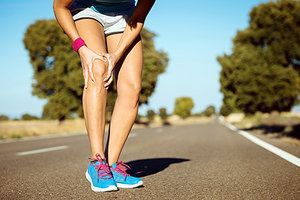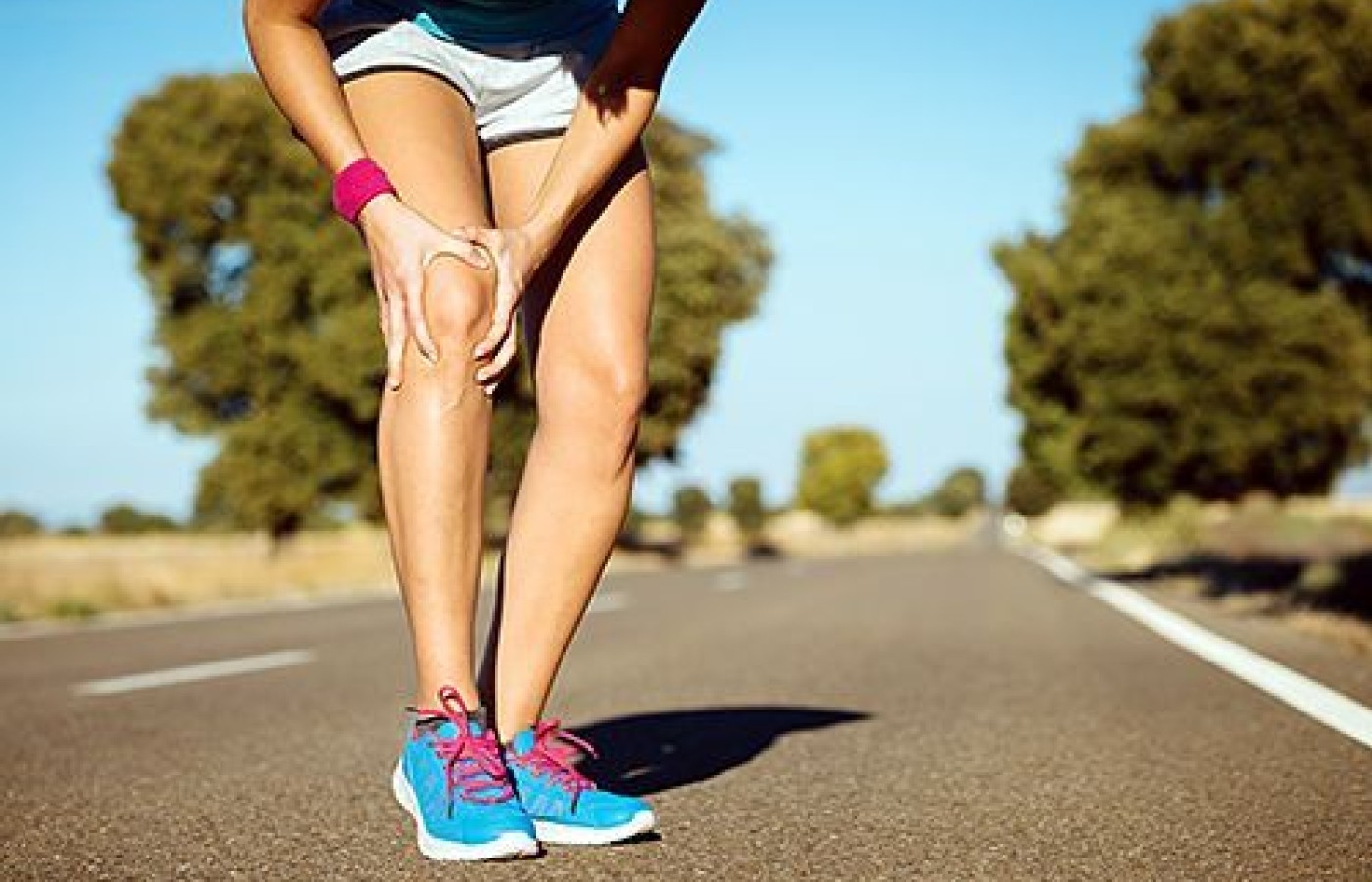New York's highest court of appeals has held that no-fault insurers cannot deny no-fault benefits where they unilaterally determine that a provider has committed misconduct based upon alleged fraudulent conduct. The Court held that this authority belongs solely to state regulators, specifically New York's Board of Regents, which oversees professional licensing and discipline. This follows a similar recent ruling in Florida reported in this publication.
Joint Supplements for Athletes (Part 2)
Editor's Note: Part 1 of this article appeared in the March 1 issue.
A fairly recent discovery in nutrition supplemental medicine has proven to be a breakthrough in maintaining athletic joint health. Research suggests a combination of undenatured type-II collagen and tetrahydro-iso-alpha acids helps revitalize joint function and performance in athletes.1-4
The impact of strenuous exercise on joints may cause localized pain and stiffness, which are hallmark features of pathologic inflammatory disease (osteoarthritis).5 Studies have shown that strenuous exercise can lead to significant losses in articular cartilage and glycosaminoglycans.6 In fact, some studies have shown that many of the cytokines implicated in the onset and progression of OA also appear to regulate the remodeling of normal extracellular matrix (ECM) following strenuous exertion.7
Conventional medical wisdom has long held that osteoarthritis results from age-related "wear and tear." For the first time, a team of researchers at Stanford University demonstrated that this is not true. Their 2011 research suggested a nutritional intervention can safely regulate the immune system to protect aging / stressed joint tissue from autoimmune attacks.8

The 25-member team concluded that the development of osteoarthritis is in great part driven by low-grade inflammatory processes. Specifically, the researchers discovered that low-grade inflammation launches an orchestrated, powerful attack on the synovial jointsvia signaling proteins normally used to fight infections. This autoimmuneresponse, they reported, plays a key role in osteoarthritis onset.
Undenatured Type-II Collagen
Fortunately, scientists have discovered that undenatured type-II collagen retrains killer T-cells (which destroy target cells) so they recognize collagen as a harmless substance – preventing the joint damage seen in osteoarthritis.9
Undenatured type-II collagen was discovered when a team of scientists at the University of Nebraska found that chicken soup prevented the mobilization of immune system cells to sites of inflammation. Upon further analysis, they found it was not vegetables, but a component of the chicken broth itself that exerted this anti-inflammatory activity. Chicken-derived type II collagen was found to regulate the immune system and prevent the attack of proteins and healthy joint cartilage.10
Undenatured type-II collagen has been proven to activate a pathway known as "induced oral tolerance," which teaches the immune system to correctly recognize cartilage proteins as the body's own tissues instead of foreign microbes. Oral-induced tolerance thus prevents an inflammatory attack, a newly recognized cause of osteoarthritis.11-12
Undenatured type-II collagen's key feature is that it facilitates "induced specific oral tolerance." T-cells are in part immune system watchdogs, constantly assessing the three-dimensional structure of proteins they encounter in order to distinguish between harmless "self" proteins and potentially deadly "foreign" proteins. If T-cells are exposed in the blood to a new protein structure – such as an unrecognized protein on separated collagen fiber – they react violently and trigger an inflammatory response to destroy what is presumed to be a disease-causing invader.13-15 However, scientists have learned it is possible to teach T-cells that the collagen molecule is a friend, rather than a foe.
Induced specific oral tolerance retrains T-cells to ignore collagen fibers when they are encountered in joints. Rich collections of immune tissue located in the lower end of the small intestine(called Peyer's patches) act as "training centers" for the immune system. Peyer's patches expose T-cells to a vast variety of molecular shapes among the natural components in the food we eat. This desensitizesT-cells to new foods to avoid constant inflammatory or allergic reactions. In other words, this is the area that induces tolerance.16
Native collagen introduced into the digestive tract – rather than directly into the bloodstream – can "educate" T-cells to ignore collagen fibers when they are encountered in the joints. In scientific terms, the result is "induced specific oral tolerance." This oral tolerance to collagen powerfully suppresses joint inflammation, as has been shown in numerous studies. In order to induce tolerance to exposed joint collagen, the orally introduced product must be type II collagen (the same form of collagen found in the cartilage matrix), and must have the exact same three-dimensional structure. Undenatured type II collagen retains its molecular structure, allowing it to induce oral tolerance.17
Tetrahydro-Iso-Alpha Acids
The second key ingredient in revitalizing joint function and performance in athletes is tetrahydro-iso-alpha acids. Research has shown that tetrahydro-iso-alpha acids modulate kinases to prevent the expression of the NF-kB pathway. This pathway is the signal transducer of inflammation in a cell. In other words, it reduces the level of inflammation.18
Tetrahydro-iso-alpha acids contribute to maintaining joint health by decreasing inducible inflammation (cell production of inflammation at the time of injury). In addition, studies have shown the acids reduce swelling of acute inflammation and inhibit bone / cartilage degeneration with chronic inflammation.19-25
In a landmark study, the combination of undenatured type II collagen and tetrahydro-iso-alpha acids was shown to promote joint health, specifically by positively influencing knee extension (knee extension is necessary for daily function and sports activities). Additional findings reveal the combination allowed athletes to exercise for longer periods of time before experiencing joint discomfort and to recover from joint injury faster.26-27
Breakthrough research at Harvard, Stanford and the University of Nebraska confirms the supplemental value of the combination to maintain and revitalize joint function.28 These results suggest we can have a profound impact on athletic performance and longevity in our patients.
References
- Crowley DC, Lau FC, Sharma P, et al. Safety and efficacy of undenatured type II collagen in the treatment of osteoarthritis of the knee: a clinical trial. Int Med Sci, 2009;6:312-321.
- Lugo JP, Saiyed ZM, Lau FC, et al. Undenatured type II collagen (UC-II®) for joint support: a randomized, double-blind, placebo-controlled study in healthy volunteers. J Int Soc Sports Nutr, 2013;10(1):48.
- Marone PA, Lau FC, Gupta RC, et al. Safety and toxicological evaluation of undenatured type II collagen. Toxicol Mech Methods, 2010;20(4):175-189.
- Barnett ML, Kremer JM, et al. Treatment of rheumatoid arthritis with oral type II collagen. Arthritis Rheum, 1998;41(2):290-297.
- Ostrowski K, Rohde T, et al. Pro- and anti-inflammatory cytokine balance in strenuous in humans. J Physiol, 1999 Feb 15;515(Pt 1):287-91.
- Kiviranta I, Tammi M, Jurvelin J, et al. Articular cartilage thickness and glycosaminoglycan distribution in the canine knee joint after strenuous running exercise. Clin Orthop Relat Res, 1992 Oct;(283):302-8.
- Hoff P, Buttgereit F, Burmester GR, et al. Osteoarthritis synovial fluid activates pro-inflammatory cytokines in primary human chondrocytes. Int Orthop, 2013 Jan;37(1):145-51.
- Wang Q, Rozelle AL, Lepus CM, et al. Identification of a central role for complement in osteoarthritis. Nat Med, 2011 Nov 6.
- "Osteoarthritis Results From Inflammatory Process, Not Just Wear and Tear, Study Suggests." Stanford Medicine News Center, Nov. 6, 2011.
- Rennard BO, Ertl RF, Gossman GL, Robbins RA, Rennard SI. Chicken soup inhibits neutrophil chemotaxis in vitro. Chest, 2000 Oct;118(4):1150-7.
- Min SY, Park KS, Cho ML, et al. Antigen-induced, tolerogenic CD11c+,CD11b+ dendritic cells are abundant in Peyer's patches during the induction of oral tolerance to type II collagen and suppress experimental collagen-induced arthritis. Arthritis Rheum, 2006 Mar;54(3):887-98.
- Weiner HL. Oral tolerance: immune mechanisms and treatment of autoimmune diseases. Immunol Today, 1997 Jul;18(7):335-43.
- Bagchi D, Misner B, Bagchi M, et al. Effects of orally administered undenatured type II collagen against arthritic inflammatory diseases: a mechanistic exploration. Int J Clin Pharmacol Res, 2002;22(3-4):101-10.
- Cremer MA, Rosloniec EF, Kang AH. The cartilage collagens: a review of their structure, organization, and role in the pathogenesis of experimental arthritis in animals and in human rheumatic disease. J Mol Med, 1998 Mar;76(3-4):275-88.
- Corthay A, Backlund J, Broddefalk J, et al. Epitope glycosylation plays a critical role for T cell recognition of type II collagen in collagen-induced arthritis. Eur J Immunol, 1998 Aug;28(8):2580-90.
- Recommendations for the medical management of osteoarthritis of the hip and knee: 2000 update. American College of Rheumatology Subcommittee on Osteoarthritis Guidelines. Arthritis Rheum, 2000 Sep;43(9):1905-15.
- Park KS, Park MJ, Cho ML, et al. Type II collagen oral tolerance; mechanism and role in collagen-induced arthritis and rheumatoid arthritis. Mod Rheumatol, 2009;19(6):581-9.
- Desaia A, Konda VR, et al.META060 inhibits multiple kinases in the NF-kappaB pathway and suppresses LPS – mediated inflammation in vitro and ex vivo. Inflamm Res, 2009;58(5):229-234.
- Desai A, Darland G, Bland JS, et al. META060 attenuates TNF-a-activated inflammation, endothelial-monocyte interactions, and matrix metalloproteinase-9 expression, and inhibits NF-kB and AP-1 in THP-1 monocytes. Atherosclerosis, 2012;223(1):130-136.
- Konda VR, Desai A, Darland G, et al. Arthritis Rheum, 2010;62(6):1683-1692.
- Tripp M, Darland G, Lerman RH, et al. Presented at: Fed Am Soc Experimental Biol, 2003 April.
- Lerman RH, Liska D, et al. Proprietary Clinical Research Report. Gig Harbor, WA: Functional Medicine Research Center; 2004.
- Lerman RH, Liska D, Tripp M, et al. Proprietary Clinical Research Report. Gig Harbor, WA: Functional Medicine Research Center; 2004.
- Lukaczer D, Lerman RH, Tripp M, et al. Proprietary Clinical Research Report. Gig Harbor, WA: Functional Medicine Research Center; 2004.
- Minich DM, Bland JS, Katke J, et al. J Physiol Pharmacol. 2007;85:872-883
- Lerman RH. Proprietary Clinical Research Report. Gig Harbor, WA: Functional Medicine Research Center; 2013.
- Lugo JP, Saiyed ZM, Lau FC, et al. Undenatured type II collagen (UC-II) for joint support: a randomized, double-blind, placebo-controlled study in healthy volunteers. J Int Soc Sports Nutr, 2013;10:48.
- Trentham DE, Dynesius-Trentham RA, Orav EJ, et al. Effects of oral administration of type II collagen on rheumatoid arthritis. Science, 1993 Sep 24;261(5129):1727-30.



